General Energy Efficiency
Transform your home into a cozy, relaxing place of refuge with some simple no and low-cost energy efficiency upgrades. Staying at home never felt so good.
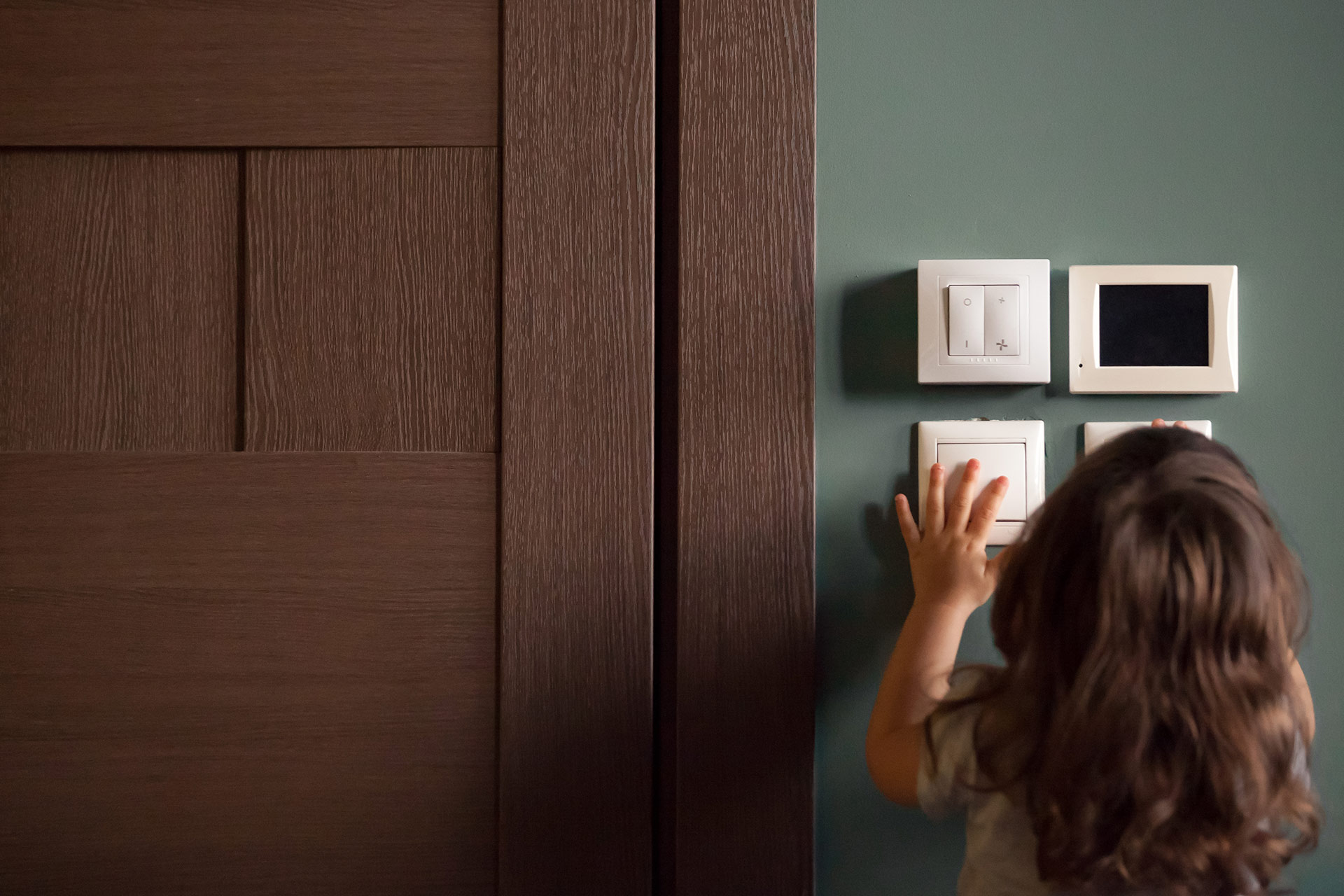
Air Sealing & Weatherization
Air sealing is designed to prevent unwanted air flowing in and out of your home. Air leaks can occur at many penetration points around your home such as windows, recessed cans, doors to the outside, plumbing areas, and attic and crawlspace hatches. Tackle air sealing with a caulk gun and add weatherstripping around doors. Rebates are available for electrically heated homes that have air sealing done professionally.
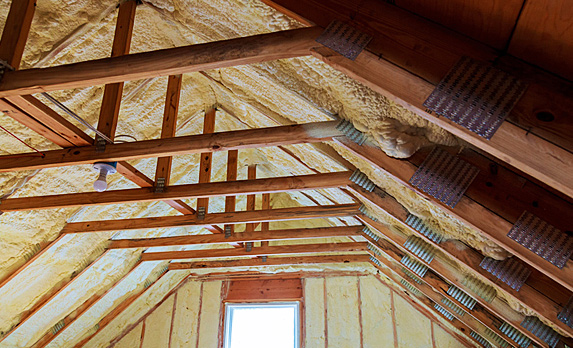
Electric space heaters
Electric space heaters are a convenient alternative heat source, but do you know how much energy an electric space heater uses?
Most space heaters use 1500 watts of energy. If you use an electric space heater 8 hours per day for a full month, the result will be 360 kilowatt-hours per month, costing approximately $38.
Using multiple space heaters for several hours per day can cause a big increase in your electric bill. If you had a recent spike in your bill, think about when you used space heaters and how many hours per day they were operating. To investigate further, you can view your monthly, daily, and hourly electricity usage on your SmartHub account. Using the SmartHub data portal, you can see when usage was up and compare that to what was happening in your home or business.
Electric Baseboard Heat
Electric baseboard heat can be one of the larger energy users in your home. At 250 watts per foot, the usage can add up quickly. A home with 40 feet of baseboard on 8 hours per day will see bills of $252 per month for heating.
Minimizing electric heat usage:
- Set thermostats to 50 degrees in rooms with plumbing when your home is unoccupied for extended periods of time when there is danger of pipes freezing.
- For rooms with no plumbing, turn thermostats off whenever the room is unoccupied. Be sure you know where all your pipes are, and when unsure, stick with 50 degrees minimum.
- Replace existing thermostats with line-voltage style programmable thermostats. Preset schedules can be entered to maintain specific temperatures at different times of the day. The Mysa smart thermostat can be controlled via your phone.
- In summer months, turn heaters completely off. Check for heaters in crawl spaces and garages so they are not left on accidentally all summer.
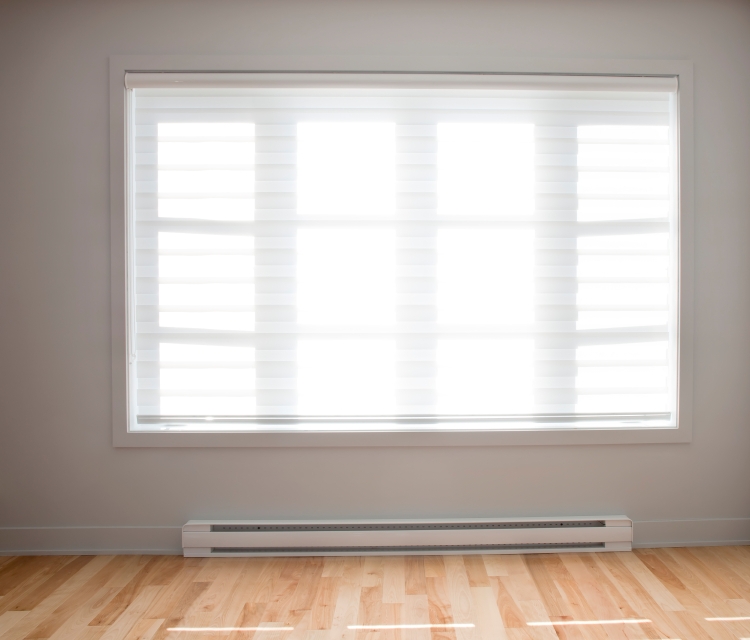
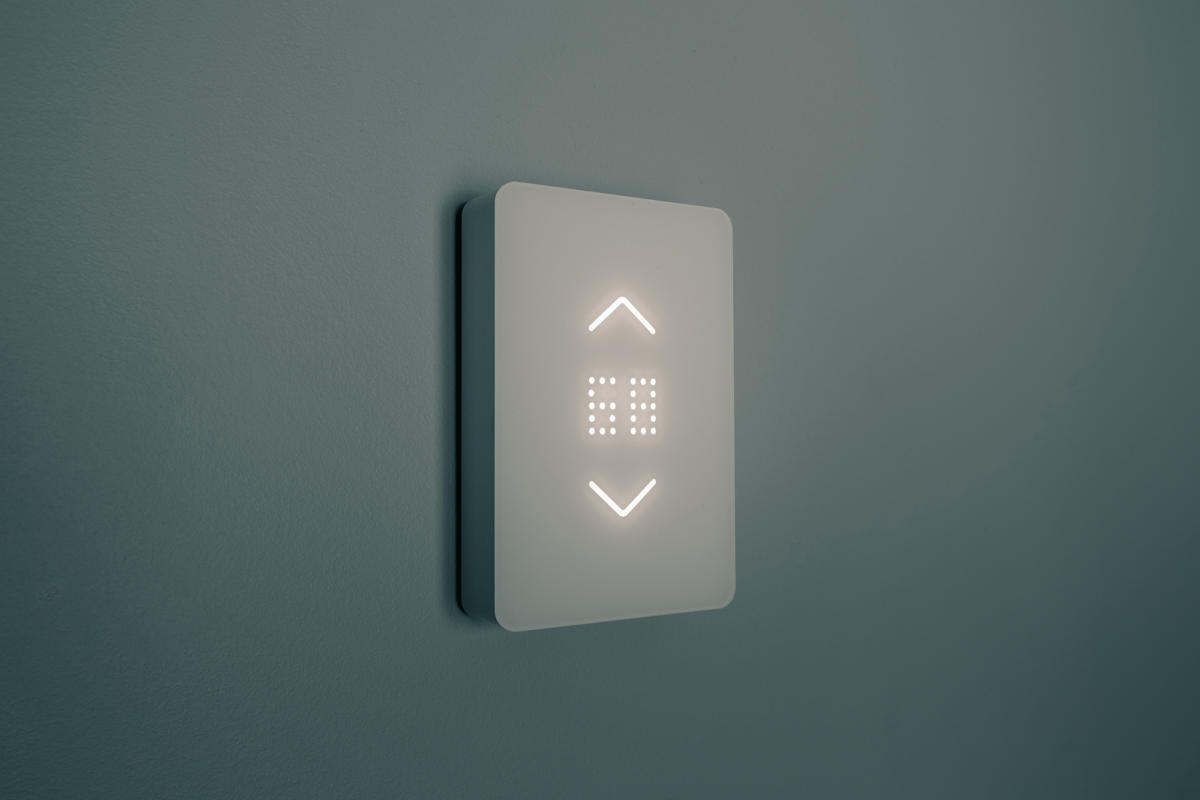
Heat Pumps for Heating & Cooling
A versatile heating and cooling system, a heat pump can both heat and cool a home by extracting heat energy from the surrounding environment and moving it to another location. In the winter, this means extracting heat from the outdoor air even in our cold climate and moving it inside to provide warmth and comfort. In the summer, this means taking heat energy from indoor air and moving it outside the home.
Benefits of Heat Pumps
- Air-to-air, air-to-water or ground (geothermal) source options
- Cold climate units utilize inverter-driven compressors to work below zero degrees
- Ductless option for easy installation
- Ducted options available to utilize existing ductwork
- Room-by-room comfort allows you to keep the rooms used the most at your ideal temperature
- Savings up to 50% on winter electric bills compared to heating with electric baseboards
- Learn more:
Helpful tips for getting the most out of your heat pump
[us_btn label=”Download PDF” link=”url:https%3A%2F%2Fwordpress-851390-3159745.cloudwaysapps.com%2Fwp-content%2Fuploads%2F2022%2F10%2FHCE-HeatPumpTips-October2022.pdf||target:%20_blank|” align=”center”][us_btn label=”PDF – Español” link=”url:https%3A%2F%2Fwordpress-851390-3159745.cloudwaysapps.com%2Fwp-content%2Fuploads%2F2022%2F12%2FHCE-HeatPumpGuide-2022-SPANISH_v1.pdf||target:%20_blank|” align=”center”]
Heat Tape & Ice Dams
What Causes Ice Dams?
Ice dams form when attic air or cathedral ceiling air becomes warm enough to heat the underside of the roof, which in turn causes the snow on top of the roof to thaw. The melting snow runs down the roof until it hits an eave or roof edge that is below the freezing point. The melted snow refreezes and creates a ridge of ice — an ice dam — which blocks further runoff. As snow continues to melt, the ice dam blocks the water from flowing freely into the gutter. The water can work its way down through any gaps in roofing materials, causing leaks in your ceiling and walls.
Many homeowners install heat tape (heated cable) that zig zags on roof by gutters and runs in gutters and downspouts. Heat tape uses 6-12 watts per foot and can double your winter electric bill. Heat tape is necessary on some roofs and gutters, but it is a band-aid to fixing the real issue.

Insulation
Insulation helps slow the heat flow in and out of your home. Insulation comes in a variety of options such as blown-in cellulose, fiberglass batts and spray foam. Insulation is measured in R-value, a measure of a material’s ability to resist the flow of heat. In our colder climate, the Department of Energy recommends R49 to R60 in attics and R25 to R30 in crawlspaces. To determine the amount of R-value currently in your home, use the following factor times the number of inches of insulation. For example, your home has cellulose insulation at a depth of 8 inches in your attic, the R-value would be 3.7 x 8 = 29.6. Time to add more insulation!
- Loose fiberglass – 2.5
- Fiberglass batting – 3.2
- Rock wool – 2.8
- Cellulose – 3.7
Lighting
LED lighting is 90% more efficient than incandescent light bulbs. LEDs work by passing electrical current through a microchip, which illuminates the tiny light sources called Light Emitting Diodes resulting in visible light.
Benefits of LED lighting
- Long lifespan: 25,000 to 50,000 hours
- Energy Efficient
- Save $5.75 per year for switching out one 60-watt bulb to 9-watt LED
- High brightness and intensity
- Exceptional color range
- Low radiated heat
- Instantaneous illumination
- Directional lighting
- No UV light emitted
- Variety of bulbs and color temperatures available to fit your mood and décor
- Best value in lighting; purchase Energy Star bulbs
How to choose the right bulb
- Lumens = brightness; the higher the lumens, the brighter the light
- Color temperature = degrees kelvin; 2700k warm light to 5000k white light
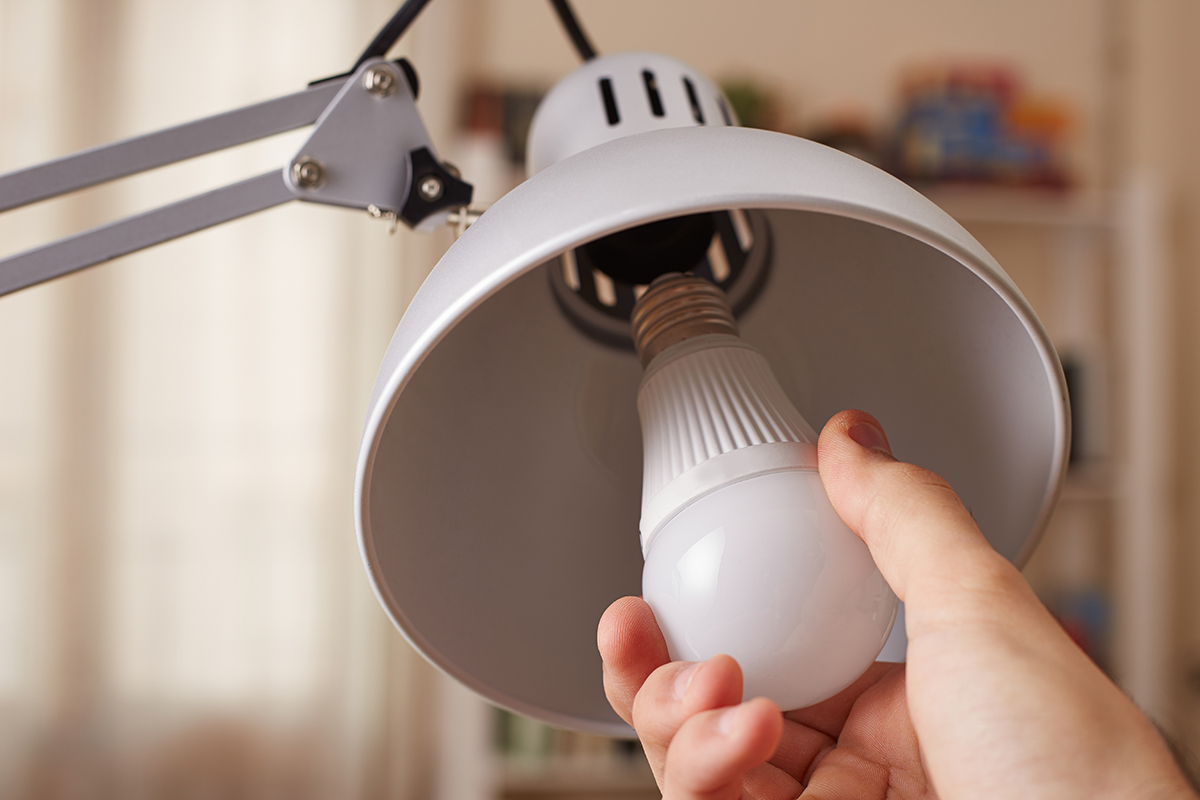
Phantom Loads (stuff plugged into the wall)
The typical American home has 40 products constantly drawing power. That can add up to 10% of your monthly electric bill. Consider plugging electronics and appliances into an advanced power strip. Learn what to plug into your advanced power strip.

Rebates
Residential and commercial rebates
Check out HCE’s other programs designed to give you choices on more ways to save on your energy bills

Thermostats
Adjusting your thermostat can save a considerable amount of money in every season of the year. According to the Department of Energy, programmable, or smart, thermostats can save as much as 10 percent a year by simply turning your thermostat back 7 to 10 degrees for 8 hours a day.
- Thermostats lose calibration over time and may cause heating and cooling systems to cycle on more frequently.
- Smart thermostats allow you to control the temperature via your smart phone.
- Programmable thermostats come in a variety of options such as 5-2 programming: one setting for weekdays and one for weekends.
- Mysa smart thermostats work with electric baseboard heat.
- Contact your gas provider for thermostat rebates on gas heating systems.

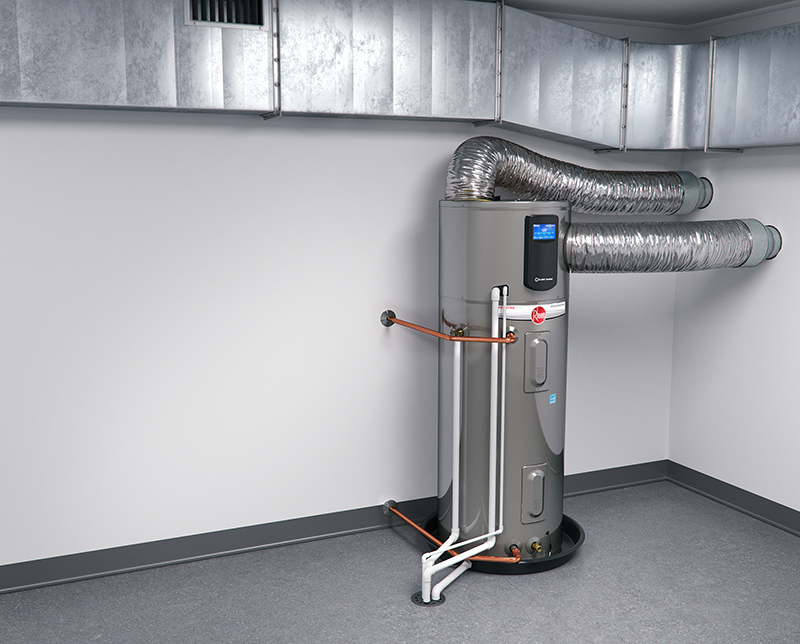
Water Heating
Most tank water heaters last 8-12 years. Heat pump water heaters reduce water bills up to 60% from an electric tank water heater.
Heat Pump Water Heater Overview
Holy Cross offers a rebate of 25% of project cost up to $500 for replacing electric water heater and up to $1,000 if switching from gas or propane water heaters.
Tips
- Lower your water heater setting
Lowering your temperature to 120 degrees can save you up to 10 percent on your water heater costs. Electric water heaters typically have two thermostats that need to be adjusted. It’s best to set them at the same temperature. If you are gone for long periods, put the water heater on vacation mode. When you return, simply turn the dial back to 120 degrees and hot water will be available shortly.
- Water heater maintenance
Minerals like magnesium and calcium build up over time in your water heater, especially if you have hard water, and it can reduce its heating effectiveness. Drain and flush it at least once a year – fall is a good time – and you can extend the length of your water heater’s useful life to avoid the cost of replacement.
How to flush a water heater Safety note: The water in your heater, and many of the pipes connected to your water heater, will be very HOT. Proceed with caution and protect yourself when inspecting your water heater.
- Insulate your water heater Don’t install a water heater in an unheated storage room or garage. If your unit is in a location that is exposed to cold temperatures, insulating the unit and the pipes will help to reduce costs associated with it. Use a water heater blanket to wrap around the water heater. But be careful not to insulate the top or bottom of a gas-operated or oil-operated water heater because it may interfere with venting. Use pipe wrap to wrap hot water pipes going out of the water heater.
- Take a shower instead of a bath
Typically, a shower uses 10-20 gallons of water, while a bath uses 30. Don’t shower for more than five minutes. - Fix leaky faucets
One drop of water per second equals 60 gallons of water a week. A leak that would fill a coffee cup in 10 minutes would waste 3,280 gallons of water in a year. - Use cold water when you can
Modern detergents allow you to use cold water more than ever before. 80 to 85 percent of the energy used in washing clothes is from heating the water. - Install high efficiency showerheads and aerators that are rated WaterSense and meets EPA criteria
Save up to 50 percent on hot water use. There are different types of high efficiency shower heads and aerators for faucets. They all reduce water usage without being noticeable.
Windows
Windows generally last 25 to 30 years. If you have single-pane or aluminum-framed windows, it’s time to replace them.
Tips for window shopping
- Choose a low U-factor: measures how well a window prevents heat from inside a room from escaping. Try to get the U-factor .28 or lower.
- Choose the correct solar heat gain coefficient (SHGC) depending on sun orientation to the home. SHGC measures how much solar radiation windows allow through. The lower the number, the less solar heat the window transmits into your home.
Learn more about choosing the correct window
Window Coverings
Regardless if you have old or new windows, adding window coverings will help reduce the heat loss in the winter and block the sun from heating up the house in the summer. Roughly 30% of a home’s heating energy is lost through windows and with our long, cold winters that can add up to some high winter utility bills. Cellular (honeycomb) shades are some of the most energy efficient shades on the market. For best results, use shades that have two cells rather than one.

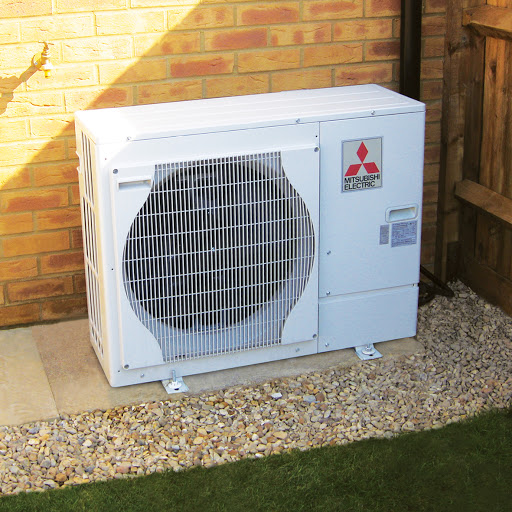


No Comments
Sorry, the comment form is closed at this time.